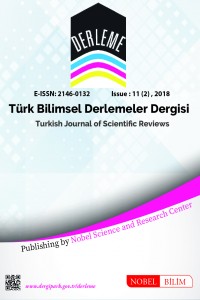Abstract
Alzheimer’s disease (AD), which
is mainly characterized by impaired memory, is a rapidly growing clinical and
public health issue due to the aging population. The neuropathological hallmarks of the disease include
accumulation of senile plaques, composed of amyloid-beta, and neurofibrillary
tangles. The amyloid-beta peptide (Aβ) cascade hypothesis
suggests Aβ accumulation is the fundamental initiator and major pathogenic
event for AD. Recent genome-wide association studies have illuminated cluster
of differentiation 33 (CD33) is a new genetic risk factor for AD. CD33 as a
type 1 transmembrane protein is mediating the cell–cell interaction. In the brain, CD33 is mainly expressed on microglial cells. In AD brain,
the CD33 level is found to be positively correlated with amyloid plaque burden
and disease severity.
References
- Barbagallo M, Marotta F, Dominguez LJ, 2015. Oxidative stress in patients with Alzheimer’s disease: effect of extracts of fermented papaya powder. Mediators of inflammation, Article ID 624801, volume 2015, http://dx.doi.org/10.1155/2015/624801.
- Gatz M, Reynolds CA, Fratiglioni L, Johansson B, Mortimer JA, Berg S, Fiske A, Pedersen NL, 2006. Role of genes and environments for explaining Alzheimer disease. Archives of General Psychiatry, 63(2), 168-174.
- Griciuc A, Serrano-Pozo A, Parrado AR, Lesinski AN, Asselin CN, Mullin K, Hooli B, Choi SH, Hyman BT, Tanzi RE, 2013. Alzheimer's disease risk gene CD33 inhibits microglial uptake of amyloid beta. Neuron, 78(4): 631-643.
- Hollingworth P, Harold D, Sims R, Gerrish A, Lambert JC, Carrasquillo MM, Abraham R, Hamshere ML, Pahwa JS, Moskvina V et.al., 2011. Common variants at ABCA7, MS4A6A/MS4A4E, EPHA1, CD33 and CD2AP are associated with Alzheimer's disease. Nature genetics, 43(5), 429-435.
- Hu N, Tan MS, Sun L, Jiang T, Wang YL, Tan L, Zhang W, Yu JT, Tan L, 2014. Decreased expression of CD33 in peripheral mononuclear cells of Alzheimer’s disease patients. Neuroscience letters, 563:51-54.
- Imtiaz B, Tolppanen AM, Kivipelto M, Soininen H, 2014. Future directions in Alzheimer’s disease from risk factors to prevention. Biochemical Pharmacology, 88(4):661-670.
- Jiang T, Yu JT, Hu N, Tan MS, Zhu XC, Tan L, 2014. CD33 in Alzheimer's Disease. Molecular Neurobiology, 49:529-535.
- Licht EA, Mcmurtray AM, Saul RE, Mendez MF, 2007. Cognitive Differences between Early and Late-Onset Alzheimer’s Disease. American Journal of Alzheimer’s Disease & Other Dementias, 22(3):218-222.
- Mao YF, Guo ZY, Pu JL, Chen YX, Zhang BR, 2015. Association of CD33 and MS4A cluster variants with Alzheimer’s disease in East Asian populations, Neuroscience letters, 609:235–239.
- Mayeux R, Stern Y, 2012. Epidemiology of Alzheimer Disease. Cold Spring Harbor perspectives in medicine, 2(8): 1-18.
- Panegyres PK, Chen HY, 2013. Differences between early and late onset Alzheimer’s disease, American journal of neurodegenerative disease, 2(4):300-306.
- Reitz C, Mayeux R, 2014. Alzheimer disease: Epidemiology, diagnostic criteria, risk factors and biomarkers. Biochemical Pharmacology, 88: 640–651.
- Selekler K, 2010. Alois Alzheimer ve Alzheimer hastalığı. Türk Geriatri Dergisi, 13(3): 9-14.
Abstract
Hafızadaki
bozukluklar ile karakterize Alzheimer hastalığı (AH) yaşlanan nüfustaki artış
nedeniyle hızla büyüyen klinik ve halk sağlığı sorunu haline gelmiştir. Amiloid-beta
(Aβ) yapısındaki senil plakların birikimi ve nörofibriler yumaklar hastalığın
nöropatolojik özellikleri arasındadır. Aβ-peptid kaskad hipotezi, Aβ
birikiminin AH için başlatıcı ve majör patojenik olay olduğunu
düşündürmektedir. Son yıllarda yapılan genom çapında ilişkilendirme
çalışmalarında, hücre-hücre etkileşimine aracılık eden ve Tip 1 transmembran
proteini olan farklılaşma kümesi 33 (CD33 (cluster of differentiation 33)), AH için yeni bir risk faktörü olarak önerilmektedir.
Mikroglial hücrelerde ifade edilen CD33 düzeyinin amiloid plak miktarı ve
hastalık şiddeti ile ilişkili olduğu bulunmuştur.
References
- Barbagallo M, Marotta F, Dominguez LJ, 2015. Oxidative stress in patients with Alzheimer’s disease: effect of extracts of fermented papaya powder. Mediators of inflammation, Article ID 624801, volume 2015, http://dx.doi.org/10.1155/2015/624801.
- Gatz M, Reynolds CA, Fratiglioni L, Johansson B, Mortimer JA, Berg S, Fiske A, Pedersen NL, 2006. Role of genes and environments for explaining Alzheimer disease. Archives of General Psychiatry, 63(2), 168-174.
- Griciuc A, Serrano-Pozo A, Parrado AR, Lesinski AN, Asselin CN, Mullin K, Hooli B, Choi SH, Hyman BT, Tanzi RE, 2013. Alzheimer's disease risk gene CD33 inhibits microglial uptake of amyloid beta. Neuron, 78(4): 631-643.
- Hollingworth P, Harold D, Sims R, Gerrish A, Lambert JC, Carrasquillo MM, Abraham R, Hamshere ML, Pahwa JS, Moskvina V et.al., 2011. Common variants at ABCA7, MS4A6A/MS4A4E, EPHA1, CD33 and CD2AP are associated with Alzheimer's disease. Nature genetics, 43(5), 429-435.
- Hu N, Tan MS, Sun L, Jiang T, Wang YL, Tan L, Zhang W, Yu JT, Tan L, 2014. Decreased expression of CD33 in peripheral mononuclear cells of Alzheimer’s disease patients. Neuroscience letters, 563:51-54.
- Imtiaz B, Tolppanen AM, Kivipelto M, Soininen H, 2014. Future directions in Alzheimer’s disease from risk factors to prevention. Biochemical Pharmacology, 88(4):661-670.
- Jiang T, Yu JT, Hu N, Tan MS, Zhu XC, Tan L, 2014. CD33 in Alzheimer's Disease. Molecular Neurobiology, 49:529-535.
- Licht EA, Mcmurtray AM, Saul RE, Mendez MF, 2007. Cognitive Differences between Early and Late-Onset Alzheimer’s Disease. American Journal of Alzheimer’s Disease & Other Dementias, 22(3):218-222.
- Mao YF, Guo ZY, Pu JL, Chen YX, Zhang BR, 2015. Association of CD33 and MS4A cluster variants with Alzheimer’s disease in East Asian populations, Neuroscience letters, 609:235–239.
- Mayeux R, Stern Y, 2012. Epidemiology of Alzheimer Disease. Cold Spring Harbor perspectives in medicine, 2(8): 1-18.
- Panegyres PK, Chen HY, 2013. Differences between early and late onset Alzheimer’s disease, American journal of neurodegenerative disease, 2(4):300-306.
- Reitz C, Mayeux R, 2014. Alzheimer disease: Epidemiology, diagnostic criteria, risk factors and biomarkers. Biochemical Pharmacology, 88: 640–651.
- Selekler K, 2010. Alois Alzheimer ve Alzheimer hastalığı. Türk Geriatri Dergisi, 13(3): 9-14.
Details
| Primary Language | English |
|---|---|
| Journal Section | Collection |
| Authors | |
| Publication Date | December 27, 2018 |
| Published in Issue | Year 2018 Volume: 11 Issue: 2 |


